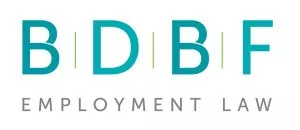21 March 2018 is the international day for the elimination of racial discrimination.
Racial diversity in the workplace
12% of the British workforce are from an ethnic minority background but those from ethnic minorities continue to be under-represented in the UK workforce and are even more under-represented in senior positions.
Women are similarly under-represented.However, the topic of gender equality has gained prominence in recent years and has resulted in the introduction of targets for women on boards and gender pay gap reporting.In comparison, the promotion of positive strategies to tackle unconscious or structural bias affecting ethnic minorities in the workplace has been much slower.Perhaps as a corollary, there seems to be more reluctance amongst corporates to talk about race in the workplace.
This is not just a problem in the private sector.A recent pay audit in the public sector found that ethnic minority workers in the public sector were paid, on average, 37% less than their white counterparts.
The economic case for encouraging racial diversity
Most companies would want their workforces to be representative of the customers or clients for whom they work but the economic benefits of creating a diverse workforce are also significant.The McGregor-Smith report, Race in the Workplace, suggested that if BME talent was fully utilised, the UK economy could benefit to the tune of £24 billion, and a 2015 study from McKinsey showed that companies in the top quartile for racial and ethnic diversity are 35% more likely to outperform their peers.
Setting targets to achieve change in the FTSE 100
The setting of targets or quotas as a means for encouraging businesses to introduce change is often criticised but targets can be a useful tool for encouraging diversity.
Understanding the scale of the under-representation of ethnic minorities in many organisations can be difficult but the membership of FTSE boards can be a good acid test.In July 2017, only 85 of the 1050 director positions were held by people from ethnic minorities and the majority of FTSE 100 boards had no directors from an ethnic minority background at all.The Parker Review, published in October 2017, looked at ways of improving the representation of BAME candidates on FTSE 100 boards and recommended the introduction of a target for each FTSE 100 company to each have one director from an ethnic minority background by 2021.
Diversity targets and quotas
Setting any target or quota for equality, particularly for a narrow pool of individuals, is a crude tool to tackle a very complex problem.Some may question whether targets are the right tool for the job at all.
In 2016, the government introduced a target for 25% of all FTSE board members to be women. Whilst on the face of it, this project was a success, a closer look into the composition of boards reveals a more disappointing picture.31% of FTSE 100 companies opted to reduce the size of their boards to increase the overall percentage of women, rather than to increase their female appointments and the overall percentage of women holding executive directorships in the FTSE 100 is still low.
In any event, whilst tackling diversity at the top level of the biggest companies is good news, it would be a mistake to focus on the most senior appointments at the expense of wider equality.
Racial diversity targets in recruitment
Race in the Workplace advocated a wider and more holistic approach.The report advocated setting targets for recruiting ethnic minority candidates at every level of the business and promoting transparency as to the achievement of those targets.Going further than the gender pay gap regulations, the report advocates that all employers with over 50 employees publish these aspirational diversity targets.The example of targets for women on boards may have made some wary but, as McGregor-Smith persuasively points out, businesses are naturally geared towards achieving objectives.
This message appears to have been taken on by some businesses.Lloyds Banking Group and RBS have both recently announced that they had set targets for ethnic minority recruitment to 8% and 14% respectively.
If businesses want to achieve better equality, then targets can only help businesses address that.Unlike gender, many businesses are reluctant to publish statistics showing how many BAME employees they have, and at what level. Part of the reason for that may be that companies themselves do not measure the data in the first place.According to the Pensions and Lifetime Savings Association, only 15% of FTSE 100 companies provided evidence on the ethnic diversity of their workforce. At the very least, being made to report on all forms of diversity, would force businesses to engage with the issue, and to do so publicly.
Clearly, tackling any form of workplace inequality is more complicated than setting a target and the measurements of performance against any targets can, to a degree, be manipulated.However, even the awareness created by setting and discussing targets does have some positive impact and it is difficult to tackle any problem if employers do not understand the scale of it.
The content of this article is intended to provide a general guide to the subject matter. Specialist advice should be sought about your specific circumstances.


